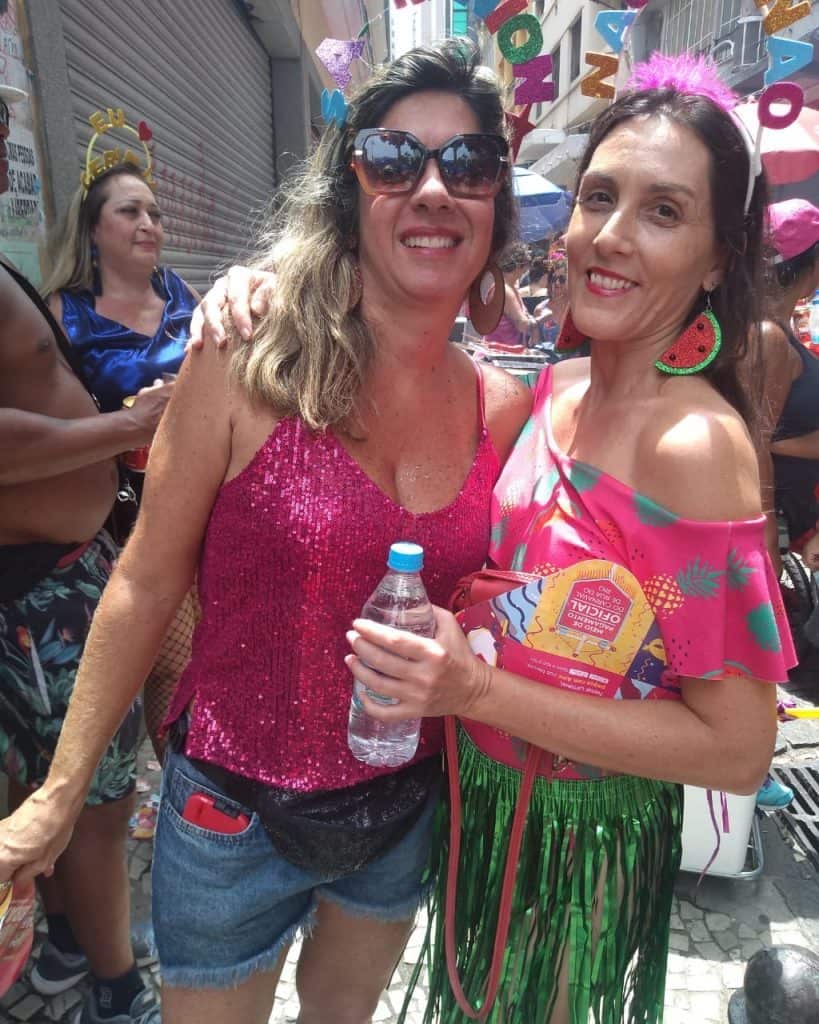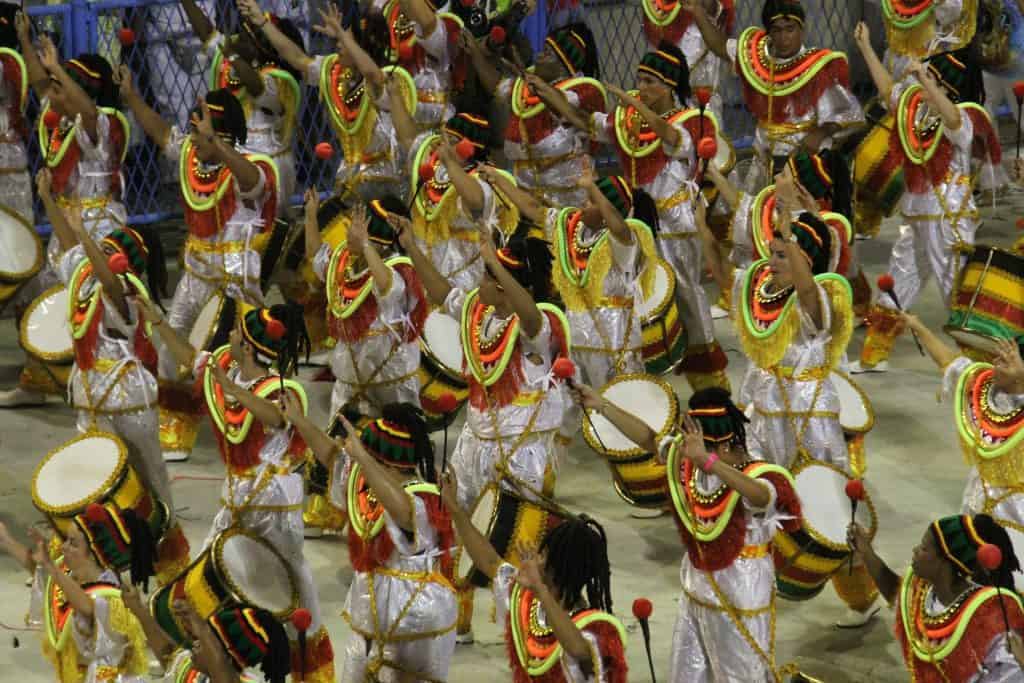Samba parades and ‘blocos’ are a must-see in the biggest show on Earth
By Ana Beatriz Marin
Officially, the Carnival is celebrated on Tuesday, exactly 47 days before Easter, and ends the next day, on Ash Wednesday. That is, it lasts two days. But in a city like Rio de Janeiro (Brazil), whose festival is known worldwide, we ignore the calendar. The mobilization is so great that, jokingly, it is often said that in Brazil the year only begins when this holiday comes to an end. It is an exaggeration, of course.
Although it is also true that everyone only talks about it. In the barracks – the sheds where samba schools prepare their parades -, people work full time to leave everything ready for the parade on Marquês de Sapucaí Avenue, the popular Sambodrome. Outside, meanwhile, revelers take the streets to sing and dance.
They are festive encounters that one should not miss if they are in Rio during Carnival. To start feeling the party vibes, one of the suggestions is to go to the headquarters of the samba schools, which since January organize technical rehearsals that people can enjoy (with a paid ticket).
Street-partying is a must-see in Carnival

Another option is to sneak into the many “blocos”, gatherings of people in customs dancing with joyful music, that run through the streets, usually starting in late January or early February. They are all free.
Also, keep in mind that there are different types of blocos. Some take crowds to the streets (such as La Favorita, from the singer Anitta; Cordão do Bola Preta; Bloco da Preta, from the singer Petra Gil; or Simpatia é Quase Amor). Others, however, are smaller and gather fewer people. It is a matter of choosing which one to join. To get to any of them, use public transportation. It is the best way, as the surrounding streets are closed and traffic in the area is complicated.
In any case, however, it is important to drink a lot of water, since the heat in Rio at this time is exhausting. The temperature can reach 40º C quite easily. For the 2020 summer, the forecast is of more pleasant weather. In fact, there have been some less hot days, but you have to keep in mind that if you are used to 40º C, 30º C is nothing. It depends, in the end, on one’s point of view.
Where to buy masks and costumes
If you feel have the time and are willing to, it is also worth walking through the streets of the popular market known as Saara, in the city center. There, you can find countless costumes, masks, and ornaments at a great price. In the blocks, it is common for people to use them. In fact, it is what attracts the most attention and entertains attendees. If you don’t feel like dressing up, put on at least some light clothes. And don’t forget the sunscreen!
In São Gonçalo, a city of just over one million inhabitants, 18km from Rio de Janeiro, Catalan artisan Olga Valles and her son Albert produce masks of clowns, monsters, animals and, of course, Spanish politicians. La Fábrica Condal, created in 1958 by Armando Valles, Olga’s husband, is a reference in Rio Carnival, with more than 3,000 different molds and around 250,000 masks produced every year. Some masks are sold to countries such as Spain, Italy, and France. It is worth a visit.
The samba schools parades

If this is your first time in Brazil, you certainly have many options of places to visit. But is it your first carnival in Rio? Well, go to the Sambadrome. It is there that samba schools show up and show everything they have prepared during the previous months. It is, in fact, a unique and unforgettable show. It’s four days of partying. The first two, Friday and Saturday (this year will be on February 21 and 22), show the schools of the so-called Group A, or Access Group (comparable to the second division of the football championships). They are schools that receive less money from the town hall. With which they make parades with less creative possibilities compared to those of the Special Group, which roll their show on Sunday and Monday (February 23 and 24). They receive a larger subsidy and since they are usually larger schools, they end up making better parades.
Where to buy tickets to see the samba schools
Ticket prices are variable and change according to the day and type of seat. For example, for the grandstand, the most sought-after and the cheapest sector, the ticket costs between R$ 200 (around 45€) and R$ 300 (65€). The individual seats cost R$ 190 (45€). If you go in a group, there is also the possibility to buy tickets near the parades, from R$ 4,300 to R$ 8,000 ( 1,000€ to 2,000€) and cabins from R$ 38,000 to R$ 100,000 (8,000€ to 21,000€). For more information, check on the official tickets website. It is highly recommended to buy tickets as soon as possible and they generally sell out.
How to get to the Sambadrome
It is also advised to reach the Sambadrome by public transport, especially by subway. But beware! Although there are two nearby stops, Central and Praça Onze, the one to take is Praça Onze, because that is where you enter to see the parades. If you go down in Central, you will have to take a very large turn until you reach the entrance points of the Sambadrome, because the bars that the town hall puts around President Vargas Avenue will prevent you from passing. For the rest, be very careful with your belongings.
Finally, keep in mind that the parades start at 9 pm and end around 6 am. Therefore, you have to be very willing! And bear in mind that you should leave for your home country as about… Four days after the end of Carnival? So you can recover from this music and dancing marathon, and travel relaxed.
The author: Ana Beatriz Marin is a journalist and videographer that lives in Rio and loves Carnival.
Search flights to Rio with Kiwi.com
FAQs about Carnival in Rio, Brazil
When is the Carnival in Rio?
Officially Carnival holidays are on Tuesday and Ash Wednesday, 47 days before Easter. In 2020 this is on February 25 and 26. However in Rio, and whole Brazil, pre-Carnival starts weeks earlier with samba schools public rehearsal for the parades and street celebrations known as “blocos”. Then the official dates are from Friday evening to Ash Wednesday. So in 2020, Brazil stops to enjoy Carnival from February 21 to February 26.
What is there to do in Rio for Carnival?
You can join the “blocos”, which bring together people in customs that go singing and dancing around the streets. Some blocos are run by famous singers, like La Favorita or Bloco da Preta. You can go to the samba schools rehearsals, which are open to the public with a paid ticket.
You can also see the samba schools parade in the Sambodrome, which is accurately described as “the biggest show on Earth”.
Is Carnival in Rio dangerous?
Carnival is a party of joy, music, dance, and love. However as safety in Brazil is a real issue, it is recommended to keep an eye on your belongings and walk around always in groups. Carnival is not more dangerous than the usual days but as revelers drink alcohol, they might be less aware of their surroundings and fall prey to robbers.
Is there sexual harassment in Carnival in Rio?
Carnival is a unique moment in Brazil, where people forget their pains and feel freer – including towards their sexuality. So it is indeed a time where a more liberated sexual behavior is not condemned for men and women alike. However, it is also true that some revelers trespass the red signs and harass women as if it was “normal” and even if they say a clear “no”. Fortunately, this is not taken as acceptable anymore and there are campaigns to build awareness about the issue.